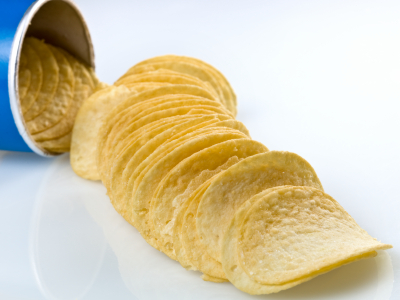An interesting new study was just published in Psychological Science, about a lab experiment at SUNY Buffalo that suggests junk-food taxes increase the overall nutritional quality of a shopping trip, while subsidies on healthy foods actually decrease the nutritional quality (via Science Daily).
[Study author and clinical psychologist Dr. Leonard] Epstein and colleagues simulated a grocery store, “stocked” with images of everything from bananas and whole wheat bread to Dr. Pepper and nachos. A group of volunteers — all mothers — were given laboratory “money” to shop for a week’s groceries for the family. Each food item was priced the same as groceries at a real grocery nearby, and each food came with basic nutritional information.
The mother-volunteers went shopping several times in the simulated grocery. First they shopped with the regular prices, but afterward the researchers imposed either taxes or subsidies on the foods. That is, they either raised the prices of unhealthy foods by 12.5 percent, and then by 25 percent; or they discounted the price of healthy foods comparably. Then they watched what the mothers purchased.
 The study authors separated food into two categories, “high calorie for nutrient” food and “low calorie for nutrient” food — i.e. junk food and healthy food. They did this so that they could specifically measure the effect pricing changes had on the nutritional content of a participant’s shopping basket. As you might expect, taxing junk food reduced junk food purchases, and subsidizing healthy food increased healthy food purchases. But the story does not end there. The researchers discovered that taxing the bad stuff was far more effective from a nutritional standpoint than subsidizing the good stuff — and not just because prices affected sales.
The study authors separated food into two categories, “high calorie for nutrient” food and “low calorie for nutrient” food — i.e. junk food and healthy food. They did this so that they could specifically measure the effect pricing changes had on the nutritional content of a participant’s shopping basket. As you might expect, taxing junk food reduced junk food purchases, and subsidizing healthy food increased healthy food purchases. But the story does not end there. The researchers discovered that taxing the bad stuff was far more effective from a nutritional standpoint than subsidizing the good stuff — and not just because prices affected sales.
The junk food taxes caused a real shift in nutritional quality because the money saved on junk food was spent on healthy food, which has more nutrients per calories. However, when the researchers subsidized healthy food in their test, many participants spent the savings on — wait for it — junk food. A subsidy for health foods actually increased the amount of fat, protein, and carbohydrates from that simulated shopping trip by about 10 percent each.
There were some other important elements to the study. A subject of some debate in academic circles involves whether obese people will react the same way as normal-weight people when presented with increased prices for junk food or reduced prices for healthy food. In this case, 40 percent of the study participants were obese, defined as a Body Mass Index over 30. They reacted to the changed prices in more or less the same way as normal-weight participants.
This SUNY Buffalo study does present some challenges for advocates of taxes and subsidies. On the one hand, I’ve argued, and continue to believe, that both taxes and subsidies are necessary components of addressing obesity. But there is clearly some risk that pairing the two policies might not give quite the bang for the buck some might hope, since consumers might use the subsidy savings to pay for more junk.
And while the ideal solution involves a general junk-food tax, the study does suggest that a soda tax on its own might still have a significant positive effect on the nutritional content of a shopping basket. A chart accompanying the study lists the “calorie for nutrient” ratings of all the foods used. Healthy foods had CFNs below 30 (bananas are 20, chicken is 11, tomatoes are 4), while junk food ratings were 30 and up. But if you look at individual foods, you realize that soda is off the charts in terms of caloric impact of a grocery trip. Cheetos, for example, have a CFN rating of 48. Pop-Tarts are 50. Starburst and M&Ms are 70 and 83, respectively. Pepsi, however, has a CFN of 443. Even mayonnaise, not exactly a stand-alone food, has a CFN of only 197. The point here is that anything that deflects purchases from soda will improve the nutritional quality of a shopping trip. And a soda tax on its own will do just that.
The challenge now is to figure out a way to bring down the cost of fruits and veggies in such as way as not to increase purchases of junk food. Here’s one idea: subsidize farmers markets and green grocers, i.e. places that tend not to sell lots of cheap, calorically dense foods. Any other suggestions?


